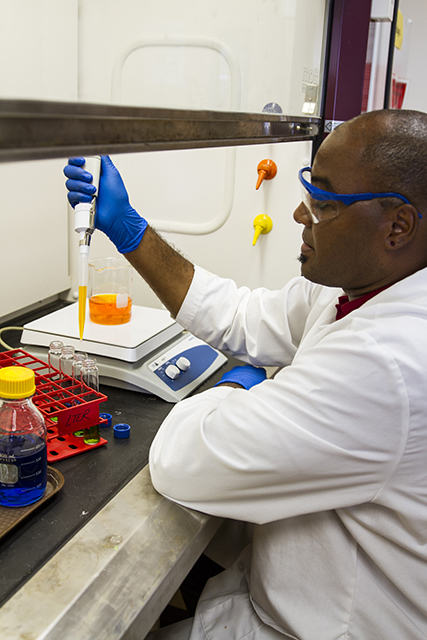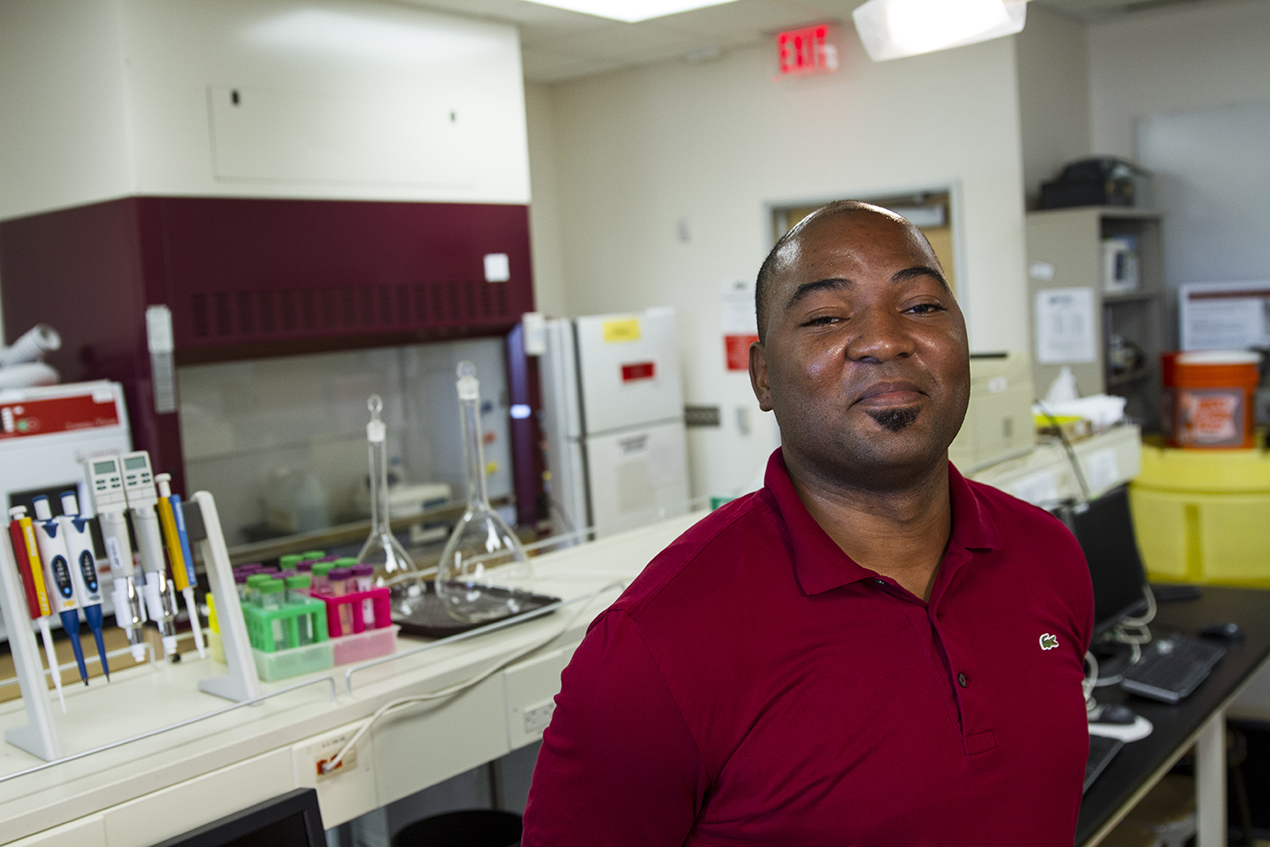Student Profile: Frank Brown
Frank Brown chose to study environmental and resource management (ERM) because of his hometown: Austin, Texas. After moving from Texas to study at Arizona State University, Brown continued to reflect on the “green culture” and sustainable infrastructure that he says characterized his hometown. “I grew up playing in the woods and swimming in the green belt, and as an adult the health of the environment is very important to me.”
Currently a senior, Brown participates in a research group led by assistant professor Kiril Hristovski that focuses on using nanoparticles to remove and recover contaminants from water with excessive nutrients, such as run-off from farmlands. Brown’s research focuses specifically on the removal and recovery of phosphate.
“It’s exciting research because recovering nutrients, like phosphate, from bodies of water means that they can be reused, which is cheaper than mining new nutrients and extends the life of a non-renewable resource,” said Brown.
Brown is conducting this research in conjunction with the Fulton Undergraduate Research Initiative (FURI) program, which includes a research stipend and the opportunity to present his research at a biannual symposium.
Brown is also working as a research assistant on an EPA-funded international project to develop a training program for the metal-plating industry in Mexico, which will help industrial wastewater treatment operators to improve their skillset and maintain a safe work environment.
“It’s rewarding to know that my work is being used by the EPA—and also a great résumé booster,” said Frank who will travel with two ERM professors to Mexico for the two-day training in early June.
“I always wanted to conduct research but I didn’t know that I would get the chance as an undergraduate,” said Brown. He credits this opportunity to hard work in the classroom and close relationships with his professors—a strength of the ERM program.
 “The ERM professors have years of relevant industry experience and understand how to apply their knowledge in the classroom,” said Brown. “Plus, they care about your success and it shows.”
“The ERM professors have years of relevant industry experience and understand how to apply their knowledge in the classroom,” said Brown. “Plus, they care about your success and it shows.”
In addition to undergraduate research, Brown is the Environmental Health and Safety Team Lead for an ASU EcoCAR3 team. The EcoCAR3 competition is a 4-year contest between 17 universities, hosted by General Motors and the U.S. Department of Energy, in which teams compete to create economical, marketable and innovative alternative fuel and hybrid technologies.
Brown has created safety trainings and emergency response procedures, such as a chemical spill cleanup action plan, to keep team members and the work environment safe. He also conducts safety checks and ensures proper use of standard operating procedures and safety protocols.
In addition to undergraduate research and hands-on learning opportunities, Brown said the ability to network with professionals in environmental fields through projects and conferences has been a highlight of the ERM program. “I recently made strong connections after I presented at the Environmental Professionals of Arizona Gatekeeper Regulatory Roundup,” said Brown, speaking about an annual conference that focuses on the evaluation and control of hazardous wastes generated in Arizona.
“These connections are important because the people you meet may end up being your future employers, faculty advisors or leads to jobs. If you don’t make yourself visible in industry then you decrease your opportunities and potential,” said Brown.
From here, Brown is considering a variety of doctoral programs or a master’s degree in environmental technology management—a graduate-level extension of the ERM program.
After graduate school and a decade of industry experience, Brown said his dream job would be to do private consulting back home in Austin—the city that first inspired him to fuse his love of the environment with his knack for scientific research.
